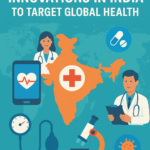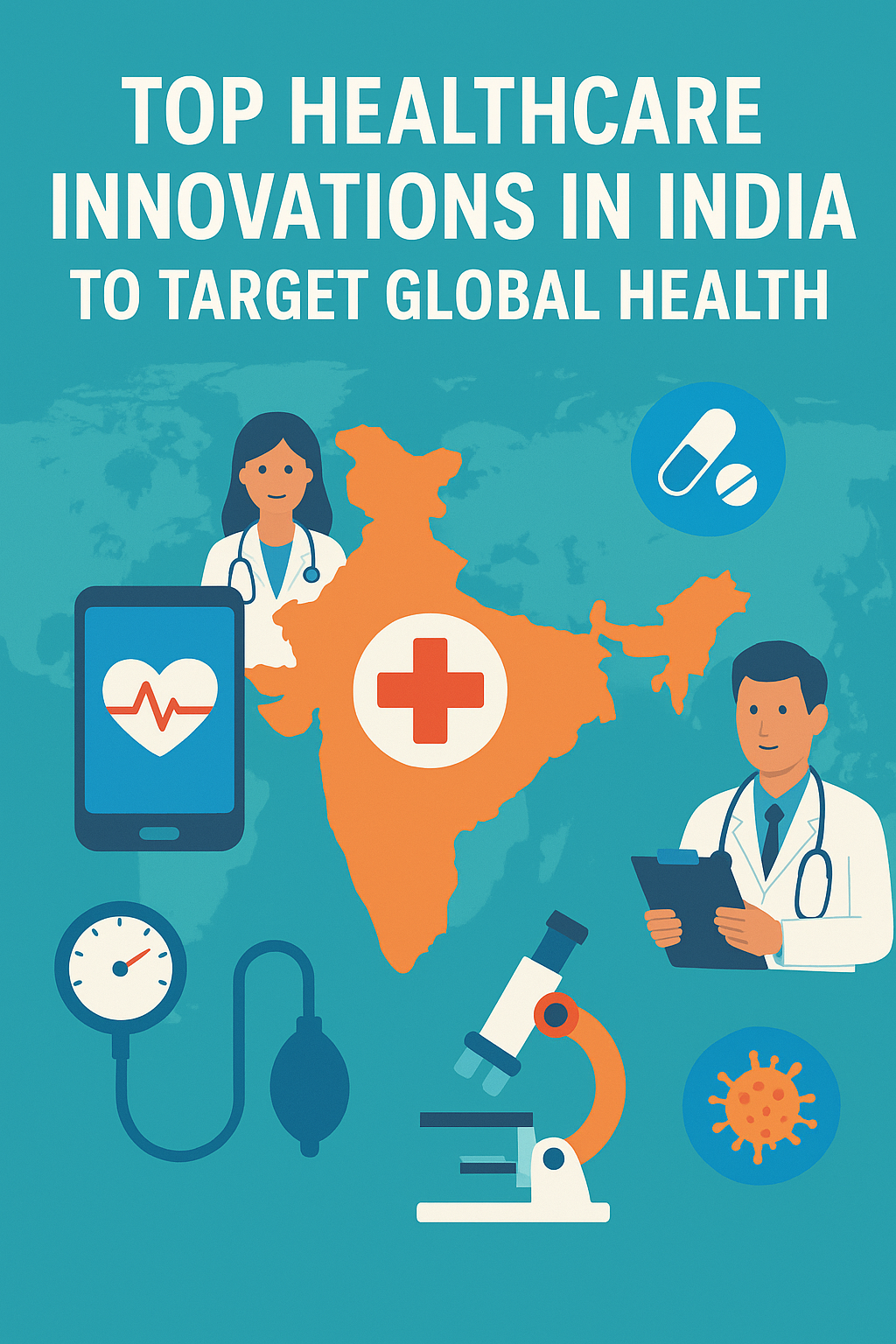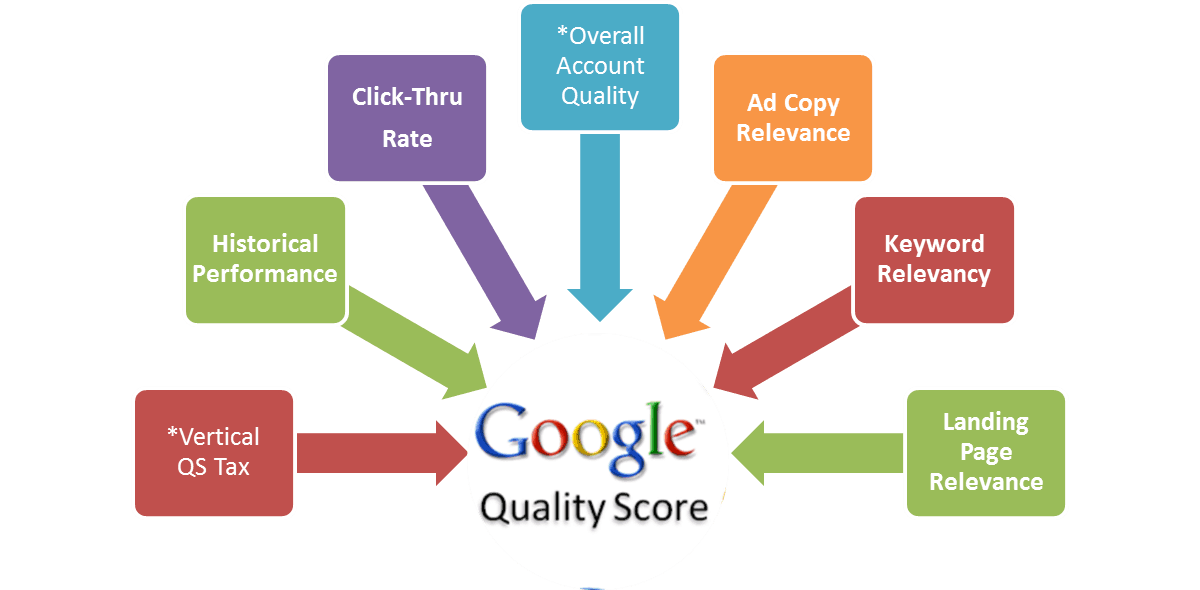India is growing immensely in multiple diverse sectors, including socio-economic, ethnic, epidemiological, and demographic. When it comes to the healthcare industry, the rise of healthcare innovations with low-cost services and products for both the Indian and global markets has increased.
Even over the last few years, especially after COVID-19, there are multiple new frontiers of innovation coming that leverage the use of emerging technologies, extending more value considerations.
Although the major focus tends to make affordable medical equipment, therapies, and information and communication technologies, outside of the spotlight, this makes users adopt basic care.
The digital healthcare and wellness market size was valued at $498 billion in 2024, and as per recent research, it is projected to reach around $3.57 trillion by 2024, with a CAGR of 22%.
Not only this, but even funding levels have been stabilized above the pre-pandemic levels. Investors now focus on business models that demonstrate lower risk and higher profitability.
Hence, in short, we can say that the rise of AI directly enhances the healthcare innovation market, which was valued at around $30 billion in 2023 and could double by 2029.
Let’s take a look at the article and explore the top healthcare innovations in India that are targeting the global healthcare market. Before that, let’s explore how these innovations overcome the challenges and benefit the market.
How Healthcare Innovations Overcome Challenges and Have Been Proven to Be Beneficial?
Healthcare Innovation, a word considered an expensive term. It directly indicates the creation and implementation of concepts, ideas, technologies, processes, and services that benefit the patient with affordable costs and improve their experience.
From simple to complex, most of them from the health industry focus on guiding forces, harsh rules & regulations, financial limitations, and affect the health equity.
Although innovators look for innovations when they realise how hospitals or networks face financial challenges, and how patients are suffering from some health practices. This will directly instigate them to innovate new ways and reduce spending while increasing ROI.
The major challenges that the healthcare industry faces are:
1. Financial Crises
Whether we talk about healthcare or any other industry, financial issues remain one of the major challenges for the future. Revenues are down due to low patient volumes, and most healthcare organizations are working tirelessly to keep their labor costs down; wages continue to grow. All this happened due to the increasing cost of medical supplies and medications resulting from inflation.
In recent years, many healthcare innovations have focused on improving operations at the financial level without sacrificing patient care quality. These innovations include transparent billing for all services, employee retention programs, and better relationships with vendors.
2. Staffing
Another challenge that leads to healthcare innovation is staffing. Healthcare facilities are facing issues in finding qualified and dependable providers, from nurses to surgeons.
However, there are multiple other reasons for staff shortages, including nursing staff and physicians, that affect patient outcomes and become most critical.
Healthcare innovations in India are targeting the global health market by putting their focus on recruiting and retaining staff who are on the horizon. This involves the creation of multiple strategies, like better benefits packages, making long-term employment contracts that are more favorable to high-profile providers, and looking for the right investors.
3. Digital Health
Digital health transformed the way individuals receive healthcare. More U.S. consumers than ever have access to affordable digital care, and in turn, this works on playing a major role in solving the health equity crises.
The smaller practices and organizations lack the funding process for developing digital health solutions. Hence, this will directly lead to a significant loss of revenue.
The use of healthcare transformations here will create the right digital health space and work as an affordable tool to build common healthcare apps. This makes it effective for small healthcare networks to offer digital services for patients to track their progress.
4. Contract Disputes
In healthcare organizations, contracts change after every few years and create wage growth, staffing issues, increased supply costs, and push for higher payments from insurers for everyday services. Even insurers are concerned about limited commercial business, so they don’t feel pressured to comply.
When it comes to the US, whenever insurers pay more for any health practice, from a routine checkup to surgery, they pass those costs onto the patient. This showcases that an average US consumer pays a higher premium, healthcare becomes inaccessible for some, and patients then loads fall once again.
The utilization of healthcare innovation disrupts the negative feedback loop to help provider networks and insurance companies be profitable without any increase in the average cost for consumers.
Top Healthcare Innovations Targeting Global Health
1. AI-Powered Diagnostics & Predictive Analytics
Artificial Intelligence emerged as a transformative way in healthcare innovations, particularly for diagnostics and predictive care. Every year, around 5 billion people in the world lack access to safe, affordable surgery and medical imaging, as per the research of The Lancet Commission on Global Surgery.
The utilization of AI diagnostic tools helps to bridge the gap by analyzing X-rays, MRIs, pathology slides, and lab reports with the right accuracy. For instance, Google Health’s AI system achieved around 95% accuracy in breast cancer detection, especially for radiologists in certain cases.
This technology was primarily developed to overcome data processing problems and make detection faster and accessible. Its predictive analytics also identify at-risk patients for conditions like heart disease or diabetes, enabling preventive interventions that save lives and reduce healthcare costs.
2. Telemedicine & Virtual Healthcare
Telemedicine was initially designed to extend healthcare access to remote and underserved areas. Today, it has become a cornerstone of global healthcare delivery. During the COVID-19 pandemic, telehealth usage surged by 78 times compared to pre-pandemic levels (McKinsey). The technology allows patients to consult doctors virtually, reducing travel costs, wait times, and hospital overcrowding. In regions with low physician density—like Sub-Saharan Africa, where there are fewer than 2 doctors per 10,000 people—telemedicine ensures timely consultations and continuity of care. Platforms now offer multilingual support and specialist access, helping people in rural or low-resource settings receive quality care. This innovation not only improves access but also reduces healthcare disparities across borders.
3. Wearable Devices & Remote Patient Monitoring
The rise of wearable health technology is driven by the global need for preventive and continuous healthcare. Chronic diseases such as cardiovascular disorders, diabetes, and respiratory conditions account for 71% of deaths worldwide (WHO).
Wearables—like smartwatches, continuous glucose monitors, and ECG-enabled devices—allow individuals to monitor vitals in real time. These devices feed data to healthcare providers, enabling remote patient monitoring (RPM) and early detection of complications.
For example, Apple’s ECG feature has been credited with detecting atrial fibrillation in thousands of users. The market for wearable medical devices is projected to exceed $90 billion by 2027, reflecting their growing role in global health management. Initially discovered to improve personal fitness tracking, these tools have evolved into lifesaving devices that connect patients to their doctors 24/7.
4. AI Healthcare Bots & Virtual Assistants
AI bots are transforming how patients and providers interact, acting as virtual healthcare assistants. Originally developed to reduce the administrative burden on medical staff, these bots now serve as 24/7 front-desk assistants, answering patient queries, scheduling appointments, providing medication reminders, and even triaging symptoms.
According to Accenture, AI-powered healthcare bots can save the U.S. healthcare system $150 billion annually by 2026. Companies like Voiceoc are leading this space by building healthcare-specific bots that communicate through both text and voice, offering multilingual and empathetic patient engagement.
For global health, this innovation ensures that patients in overcrowded or resource-limited systems receive timely responses without waiting hours—or even days—for human staff availability. AI bots are not only cost-effective but also significantly improve patient satisfaction and trust.
5. mRNA Vaccines & Next-Generation Immunization
mRNA vaccine technology gained global recognition during the COVID-19 pandemic, when vaccines from Pfizer-BioNTech and Moderna saved millions of lives.
However, the foundation of this innovation dates back to the 1990s, when researchers began exploring synthetic messenger RNA for therapeutic use. Unlike traditional vaccines, which require cultivating viruses, mRNA vaccines can be developed in weeks—making them crucial for rapidly emerging global health threats. By 2023, over 13 billion COVID-19 vaccine doses had been administered worldwide, demonstrating the scalability of this technology.
Today, scientists are leveraging mRNA platforms to create vaccines for malaria, HIV, Zika, and even cancer therapies. The adaptability and speed of mRNA vaccines hold the potential to eradicate long-standing diseases, particularly in low-income countries that have historically suffered from delayed vaccine access.
6. Robotic Surgery & Minimally Invasive Technology
Robotic-assisted surgery was first introduced in the early 2000s to enhance surgical precision and reduce human error. Today, it is revolutionizing global healthcare by making procedures less invasive, safer, and more efficient.
The da Vinci Surgical System, for example, has been used in over 10 million procedures worldwide, including cardiac, urological, and gynecological surgeries. Robotic systems allow for smaller incisions, reduced blood loss, shorter hospital stays, and quicker recovery times.
Importantly, with advancements in tele-surgery, specialists can guide procedures remotely, providing life-saving expertise in regions lacking skilled surgeons. This innovation addresses the global surgical backlog, where millions of patients wait years for essential operations, particularly in developing nations. By combining robotics with AI, surgeries are becoming smarter, safer, and more widely available.










